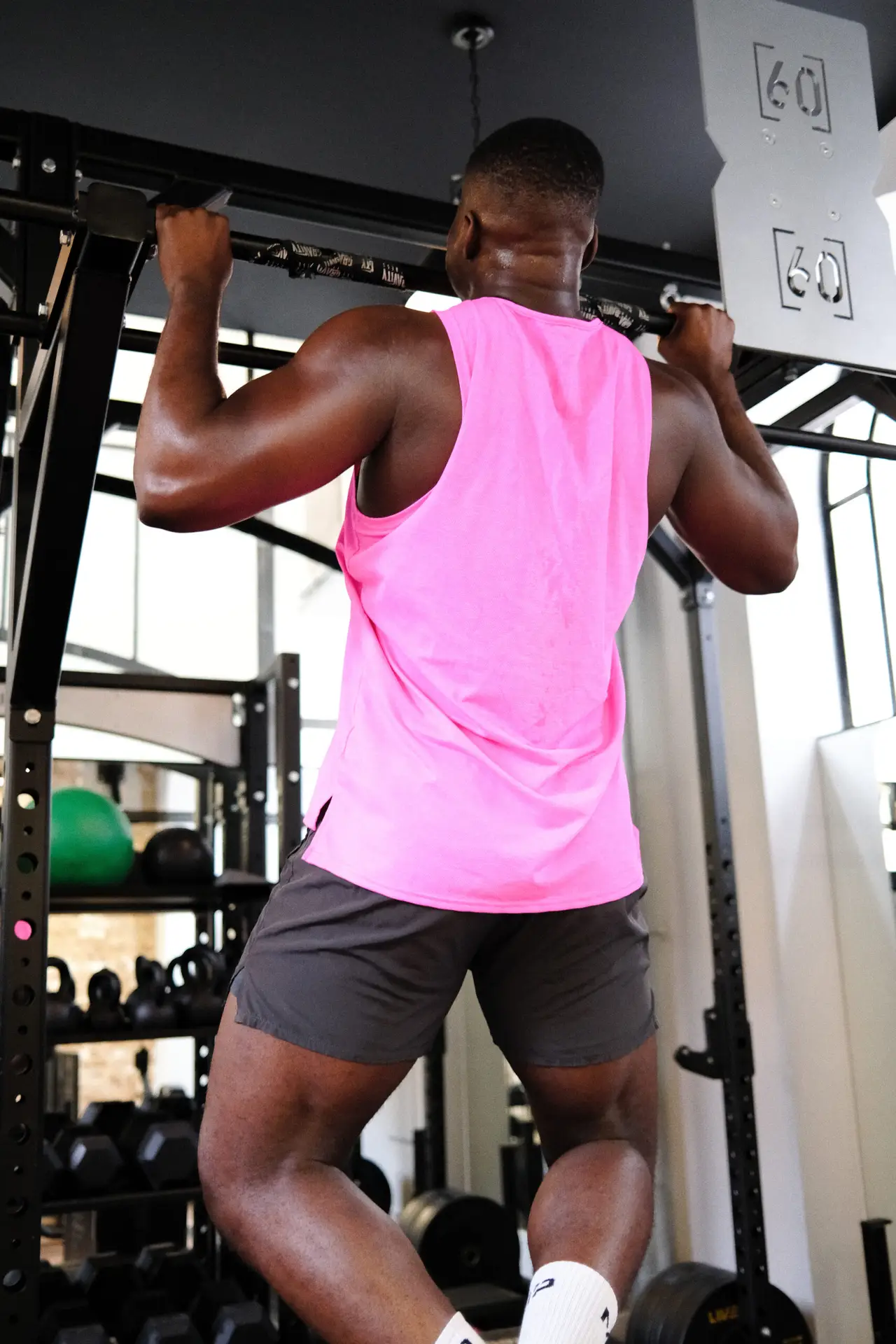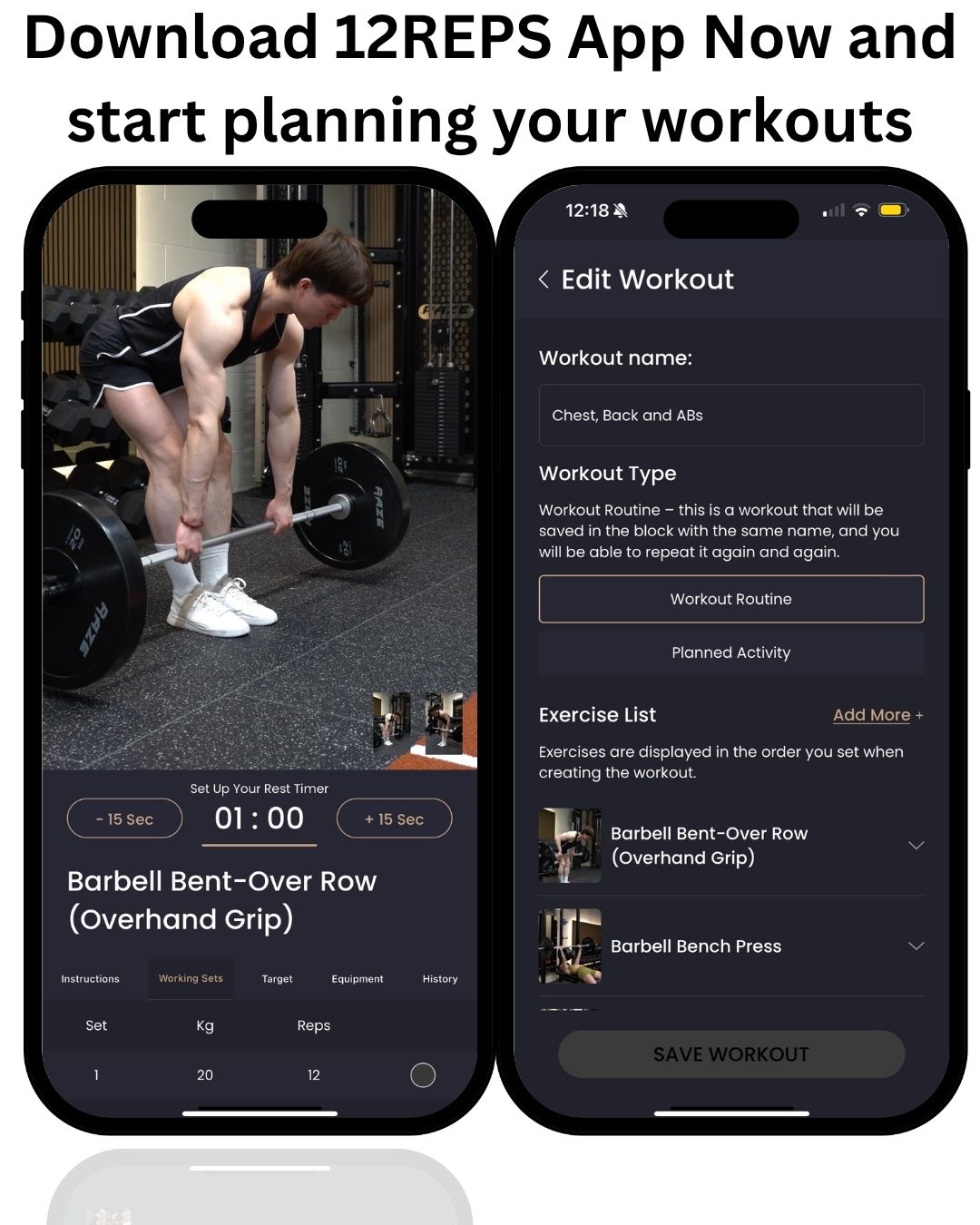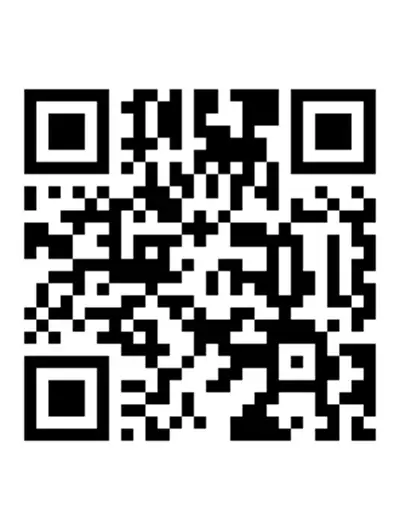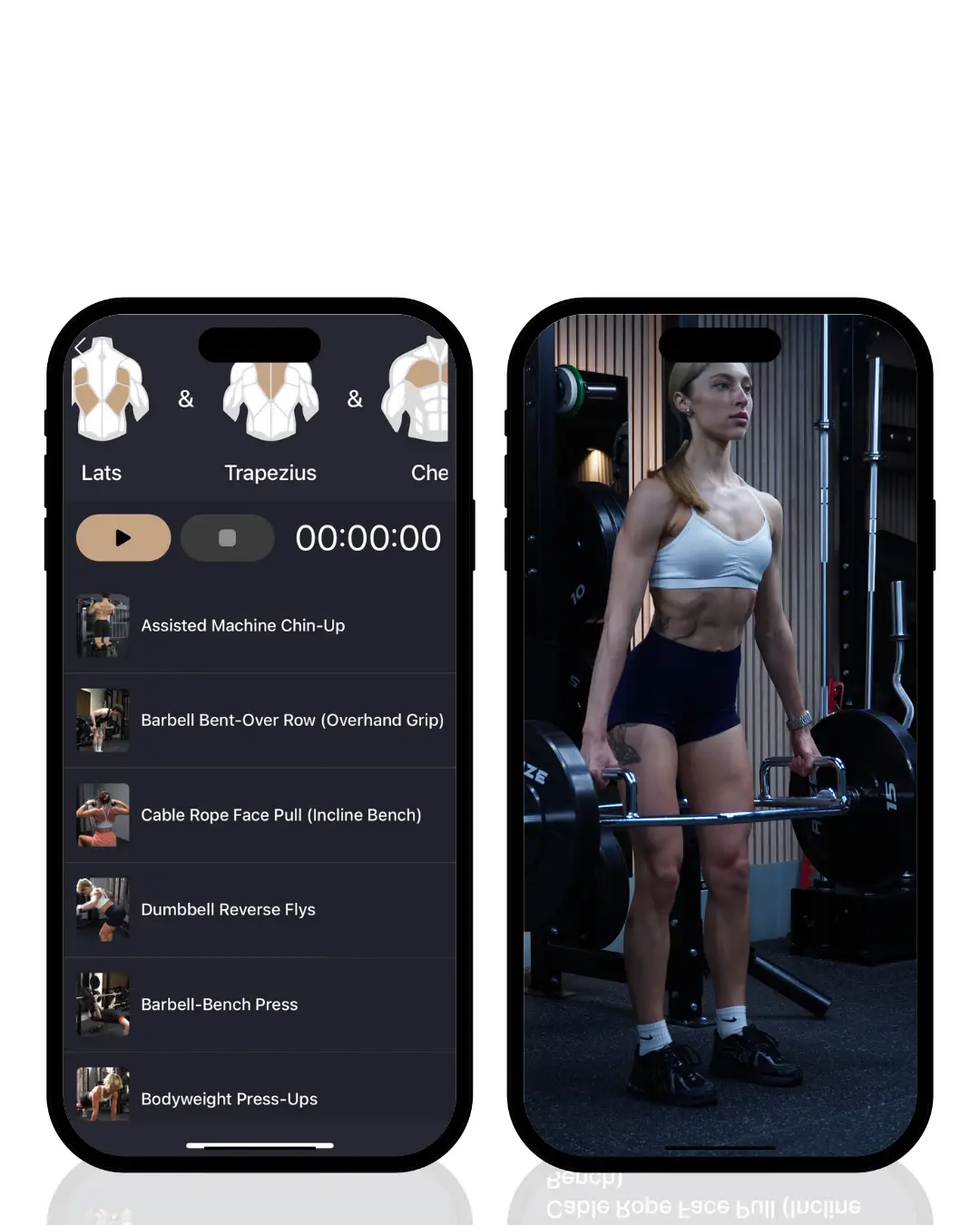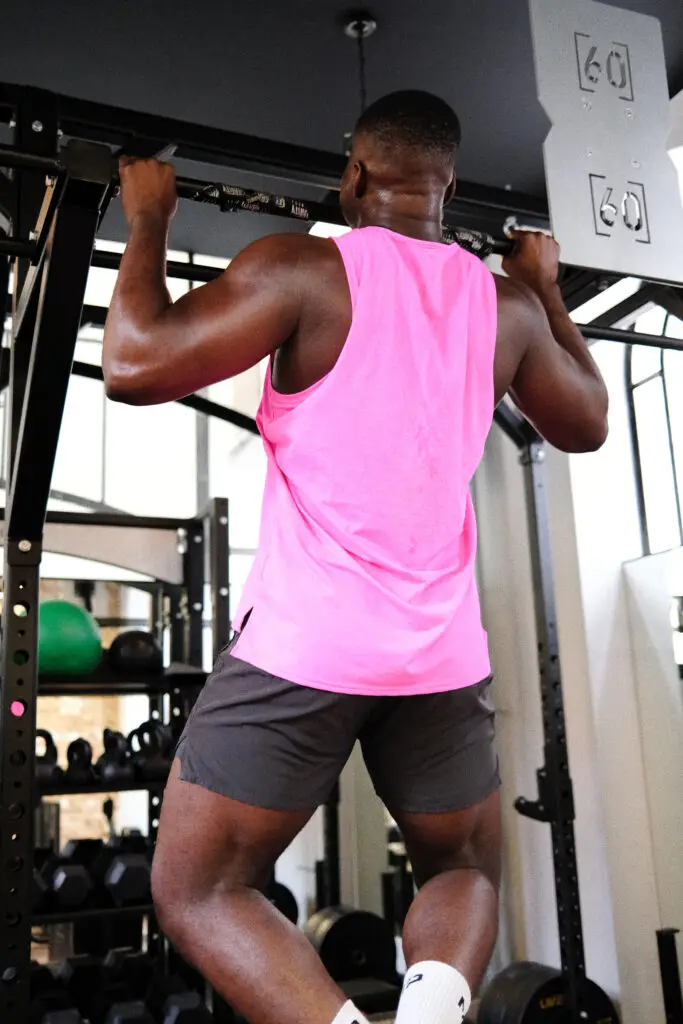By Will Duru, BSc (Hons) Sport and Exercise Science, Award-winning Personal Trainer with over 10 years of experience in strength training and optimising recovery.
I see it every day in the gym. People working out consistently for months, even years, with little to show for their efforts. They’re frustrated, confused, and starting to lose hope. Maybe this sounds familiar to you.
You’ve been following a workout routine religiously. You show up, you sweat, you feel tired afterwards. But when you look in the mirror or step on the scale, nothing has changed. Your clothes fit the same way, your strength hasn’t improved, and you’re starting to wonder if fitness just isn’t for you.
I want you to know something important: it’s not your fault. The problem isn’t your genetics, your age, or your dedication. The problem is that most workout programs are fundamentally flawed. They ignore basic principles of exercise science and set you up for failure from day one.
After 10 years of training hundreds of people, I’ve identified the seven most common problems that kill workout results. These aren’t minor issues that slow progress slightly. These are major flaws that can completely stop your progress for months or even years.
The good news is that every single one of these problems has a solution. Even better, there’s one approach that fixes all seven problems simultaneously: 12-rep training. This isn’t just my opinion; it’s based on solid research and thousands of hours of real-world experience.
In this guide, I’m going to walk you through each problem, show you how to identify it in your own routine, and explain exactly how 12-rep training provides the solution. By the end, you’ll understand why your current workout isn’t working and have a clear path forward.
You deserve to see results from your hard work. You deserve to feel stronger, look better, and be proud of what you’ve accomplished. The solution is simpler than you think, and it starts with understanding what’s been going wrong.
If you’re tired of spinning your wheels with ineffective workouts, the 12reps app provides the systematic solution you’ve been searching for. But first, let’s diagnose exactly what’s been holding you back.

Inconsistent Progressive Overload
This is the biggest reason most workouts fail, and it’s probably affecting your results right now. Progressive overload is the foundation of all muscle growth and strength development, yet most people completely misunderstand how to apply it.
What Progressive Overload Really Means
Progressive overload simply means gradually increasing the demands you place on your muscles over time. Your body adapts to whatever stress you give it, so if you keep doing the same thing week after week, your body stops adapting. You plateau, and progress stops completely.
Research shows that progressive overload is absolutely essential for continued muscle growth and strength development [1]. Without it, your muscles have no reason to get bigger or stronger because they’re already capable of handling the demands you’re placing on them.
But here’s where most people go wrong: they think progressive overload just means adding weight to the bar every week. That’s one way to progress, but it’s not the only way, and it’s often not the best way.
The Most Common Progressive Overload Mistakes
The first mistake is progressing too fast. I see people trying to add 10 or 20 pounds to their bench press every week. This works for maybe two or three weeks, then they hit a wall and can’t progress anymore. They get frustrated and either give up or start using terrible form to lift heavier weights.
The second mistake is progressing too slowly or not at all. These are the people who use the same weights for months because they’re afraid of challenging themselves. They think they need to “master” a weight before moving up, but mastery comes through progressive challenge, not endless repetition.
The third mistake is inconsistent progression. They might add weight one week, then go back to lighter weights the next week, then try something completely different the following week. There’s no systematic approach, so their body never gets a clear signal to adapt.
How to Identify Progressive Overload Problems
Look at your workout log from the past month. If you don’t have a workout log, that’s your first problem right there. You can’t manage what you don’t measure.
If you do have records, ask yourself these questions: Are you lifting heavier weights than you were a month ago? Can you do more reps with the same weight? Are you able to maintain better form while lifting the same loads? If the answer to all these questions is no, you have a progressive overload problem.
Another sign is that your workouts feel easy. If you’re not challenged by the end of each set, if you could easily do five more reps, then you’re not providing enough stimulus for your body to adapt
Why 12-Rep Training Optimises Progressive Overload
Twelve-rep training provides multiple ways to progress, making it much easier to apply progressive overload consistently. You can add weight, add reps, improve your range of motion, or increase the control and tempo of your movements.
With 12 reps as your target, you have natural progression built in. Start with a weight you can lift for 10 reps with good form. Next week, try for 11 reps. The following week, aim for 12 reps. Once you can do 12 clean reps, increase the weight and start the cycle again at 10 reps.
This approach is much more sustainable than trying to add weight every week. It allows for consistent progress without the frustration of hitting walls or using poor form to lift heavier weights.
Specific Progression Strategies That Work
The rep progression method I just described is excellent for beginners and intermediate trainees. Advanced trainees can use more sophisticated methods like adding sets, decreasing rest periods, or using more challenging exercise variations.
The key is having a plan and sticking to it. Don’t randomly decide what to do each workout. Have a systematic approach that ensures you’re always challenging your body in some way.
Remember, progressive overload doesn’t always mean doing more. Sometimes it means doing the same amount with better form, fuller range of motion, or more control. These qualitative improvements are just as valuable as quantitative ones.
The 12reps app automatically manages progressive overload, ensuring you never plateau due to poor progression planning. It takes the guesswork out of when and how to progress, giving you a clear path forward every single workout.

Examples of Better Exercise Choices
Training volume is the total amount of work you do in your workouts, and getting it right is crucial for results. Too little volume and you won’t stimulate muscle growth. Too much volume and you’ll overtrain and actually lose progress.
The Relationship Between Volume and Muscle Growth
Research consistently shows that there’s a dose-response relationship between training volume and muscle growth. Up to a point, more volume leads to more muscle growth. But there’s a sweet spot where you get maximum results, and going beyond that point can actually hurt your progress.
The challenge is that this sweet spot is different for everyone. It depends on your training experience, recovery capacity, genetics, and lifestyle factors like sleep and stress. What works for your gym buddy might be too much or too little for you.
Most people dramatically underestimate the amount of volume they need for muscle growth. They do one or two sets per exercise and wonder why they’re not seeing results. But some people go to the opposite extreme and do so much volume that they can’t recover between workouts.
Common Volume Mistakes
The most common mistake is doing too little volume. I see people doing one set of bench press, one set of squats, and one set of rows and calling it a workout. This might maintain your current fitness level, but it’s not enough to stimulate new muscle growth.
The opposite mistake is doing too much volume, especially too much junk volume. These are people who do 20 sets for their chest in one workout, thinking more is always better. But if you can’t maintain good form and intensity for all those sets, most of them are wasted.
Another mistake is inconsistent volume. Some weeks they do a lot of volume, other weeks they do very little. Your body needs consistent stimulus to adapt, so this inconsistency prevents optimal results.
How to Identify Volume Problems
If you’re not seeing muscle growth after 6-8 weeks of consistent training, volume is likely part of the problem. Look at how many total sets you’re doing per muscle group per week.
For most people, 10-20 sets per muscle group per week is the sweet spot for muscle growth. If you’re doing less than 10 sets, you’re probably not doing enough. If you’re doing more than 20 sets, you might be doing too much.
Also consider the quality of your sets. If you’re going through the motions without really challenging yourself, even 20 sets might not be enough stimulus. One high-quality, challenging set is worth more than three easy sets.
Why 12 Reps Provides Optimal Volume
Twelve-rep training naturally puts you in the optimal volume range for muscle growth. Each set takes about 30-40 seconds to complete, which is perfect for accumulating volume without excessive fatigue.
The moderate weight used in 12-rep training allows you to do more total sets than you could with very heavy weights, but not so many that you’re just going through the motions with light weights.
A typical 12-rep workout might include 3-4 sets of 4-5 exercises, giving you 12-20 total sets. This falls perfectly in the optimal range for most people, and the consistent rep range makes it easy to track and progress your volume over time.
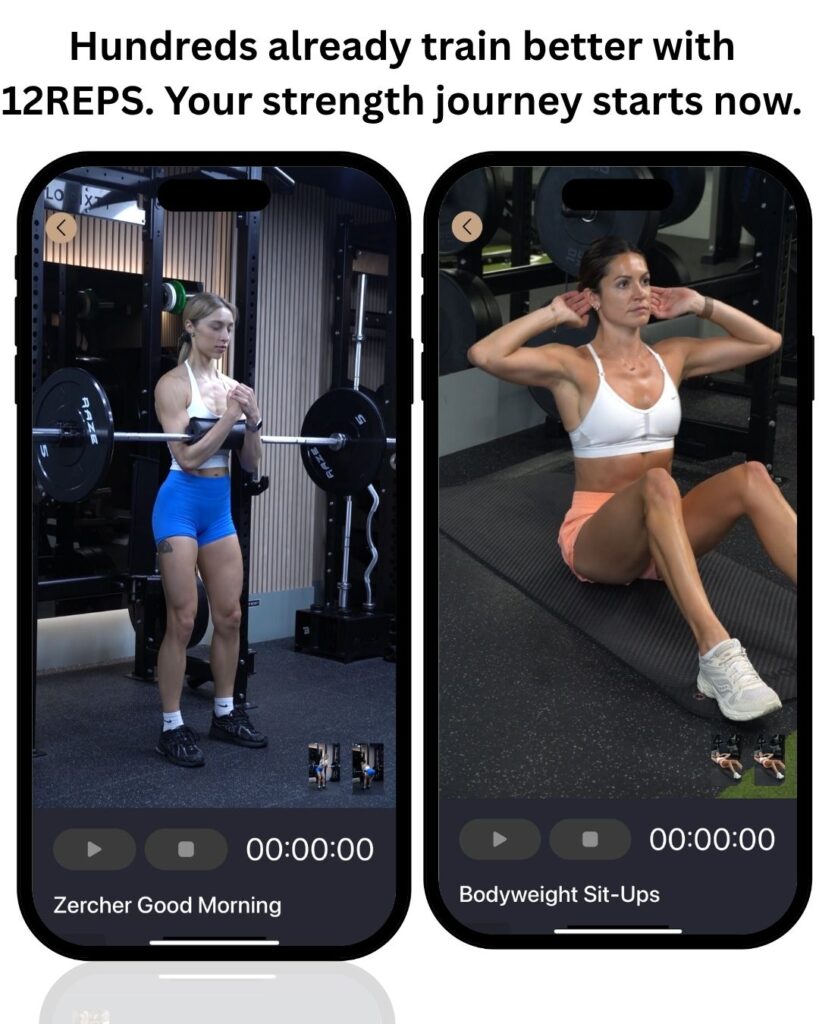
Inconsistent Training Frequency
How often you train each muscle group has a huge impact on your results. Train too infrequently and you miss opportunities for growth. Train too frequently and you don’t allow enough recovery time. Most people get this balance completely wrong.
The Importance of Training Frequency
Your muscles need regular stimulation to grow. If you only train each muscle group once per week, you’re only providing one growth stimulus per week. That’s not optimal for most people, especially beginners and intermediate trainees.
Research shows that training each muscle group 2-3 times per week typically produces better results than training each muscle group only once per week. This is because the muscle protein synthesis response to training lasts about 48-72 hours. If you wait a full week between sessions, you’re missing opportunities for growth.
But frequency isn’t just about how often you train each muscle group. It’s also about consistency. Training three times a week, once a week, and five times the following week is much less effective than training consistently 2-3 times per week.
Common Frequency Mistakes
The most common mistake is following a traditional bodybuilding split where you train each muscle group only once per week. This approach can work for advanced trainees using very high volumes, but it’s not optimal for most people.
Another mistake is training too frequently without allowing adequate recovery. I see people trying to train every single day, thinking more is always better. But your muscles need time to recover and grow between sessions.
Inconsistency is perhaps the biggest mistake of all. Life gets in the way, and people skip workouts or go weeks without training. Then they try to make up for lost time by doing marathon workout sessions, which doesn’t work and often leads to injury.
How Inconsistency Kills Progress
Your body adapts to consistent stimulus over time. When you’re inconsistent with your training, you never give your body a clear signal about what it needs to adapt to. You end up in a constant cycle of starting over rather than building on previous progress.
Inconsistency also makes it impossible to track progress effectively. If you’re constantly changing when and how often you train, you can’t tell what’s working and what isn’t. This makes it very difficult to make intelligent adjustments to your program.
From a psychological standpoint, inconsistency makes it harder to build sustainable habits. Working out becomes something you do occasionally rather than a regular part of your routine. This makes it much more likely that you’ll eventually stop altogether.
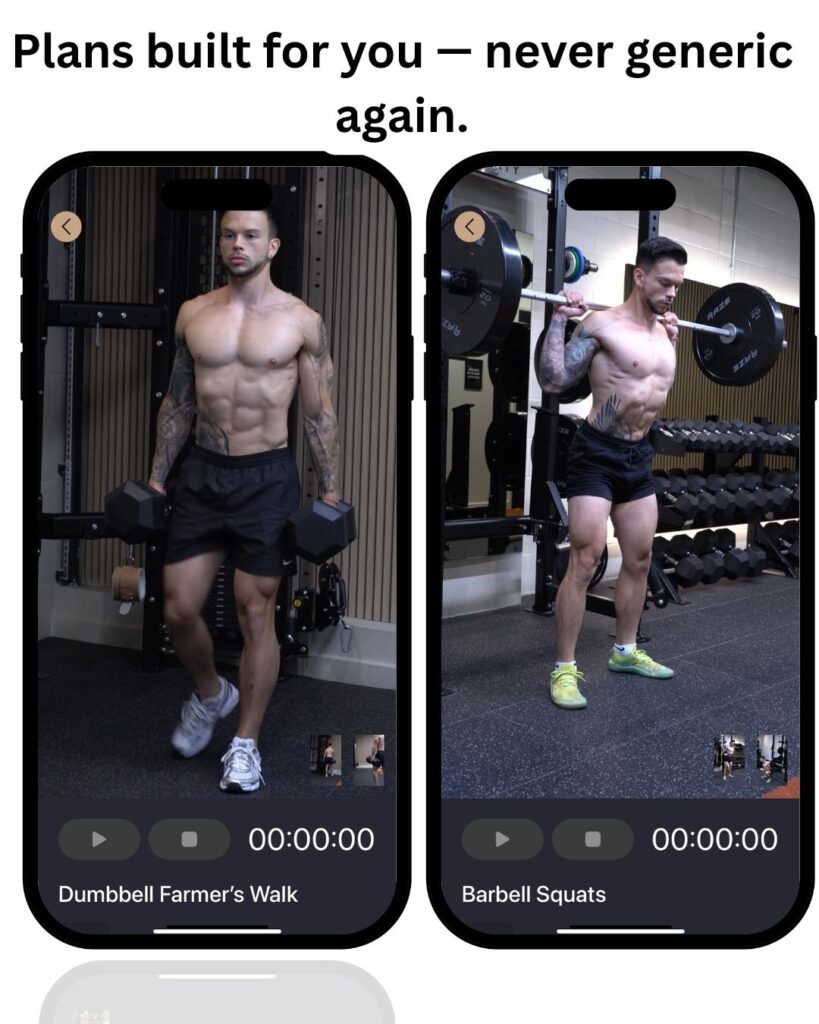
Lack of Proper Recovery
Recovery is when your muscles actually grow and get stronger. The workout provides the stimulus, but the adaptation happens during rest. If you’re not recovering properly, you’re severely limiting your results no matter how good your workouts are.
The Role of Recovery in Training Adaptations
During your workout, you’re actually breaking down muscle tissue and depleting energy stores. The muscle growth and strength gains happen afterwards, during the recovery period, as your body repairs and rebuilds stronger than before.
This process requires adequate sleep, proper nutrition, and time between training sessions. If any of these elements are missing, your recovery will be compromised, and your results will suffer.
Recovery isn’t just about avoiding overtraining. Proper recovery actually enhances the training effect, allowing you to get more results from the same amount of work. It’s not optional, it’s an essential part of the process.
Common Recovery Mistakes
The biggest recovery mistake is not getting enough sleep. Your body does most of its repair work during sleep, particularly during deep sleep phases. If you’re only getting 4-5 hours of sleep per night, you’re severely limiting your ability to recover and grow.
Poor nutrition is another major recovery mistake. Your body needs adequate protein to rebuild muscle tissue and sufficient carbohydrates to replenish energy stores. If you’re not eating enough or not eating the right foods, recovery will be compromised.
Training too frequently without rest days is also a common mistake. Some people think rest days are for lazy people, but rest days are actually when the magic happens. Your muscles don’t grow during the workout; they grow during rest.
Signs of Inadequate Recovery
There are several warning signs that indicate you’re not recovering properly. Decreased performance in the gym is a big one. If your strength is going down instead of up, or if you can’t complete workouts that were easy last week, you’re probably not recovering adequately.
Constant fatigue, even when you’re not working out, is another sign. If you feel tired all the time and lack energy for daily activities, your body is probably overwhelmed and needs more recovery time.
Frequent illness, irritability, loss of motivation, and sleep problems can also indicate inadequate recovery. Your body is trying to tell you that it needs more rest and better care.
How 12-Rep Training Optimises Recovery
Twelve-rep training is less demanding on your nervous system than very heavy lifting, which means you can recover more quickly between sessions. The moderate intensity allows for more frequent training without overwhelming your recovery capacity.
The consistent rep range also makes it easier to monitor your recovery. If you normally do 12 reps with a certain weight but can only manage 8-9 reps, that’s a clear sign you haven’t fully recovered from your previous workout.
The time-efficient nature of 12-rep training also supports better recovery by leaving more time for sleep and other recovery activities. You can get excellent results with 45–60-minute workouts, leaving plenty of time for the rest and recovery your body needs.

Poor Form and Technique
Good form isn’t just about preventing injury, although that’s certainly important. Poor form also severely limits the effectiveness of your workouts by reducing muscle activation and preventing proper progressive overload.
The Impact of Form on Training Effectiveness
When you use proper form, you’re targeting the intended muscles effectively and moving through a full range of motion. This maximises muscle activation and ensures you’re getting the most benefit from each rep.
Poor form often involves using momentum, partial range of motion, or compensatory movement patterns that reduce the work done by the target muscles. You might be able to lift heavier weights with poor form, but you’re actually getting less benefit from the exercise.
Good form also allows for consistent progressive overload. If your form is constantly changing, you can’t accurately track your progress or ensure that you’re providing a consistent stimulus for adaptation.
Common Technique Problems
The most common form mistake is using too much weight. People load up the bar with more weight than they can handle properly, then use terrible form to move it. This is not only dangerous but also ineffective for building muscle and strength.
Partial range of motion is another common problem. People do half squats, partial push-ups, or abbreviated rows because it allows them to use heavier weights or do more reps. But partial reps provide only partial benefits.
Using momentum instead of muscle force is also very common. Swinging weights up instead of lifting them, bouncing out of the bottom of squats, or using body English to complete reps reduces the effectiveness of the exercise.
How Poor Form Limits Results
Poor form reduces muscle activation in the target muscles. If you’re doing bench press with terrible form, your chest muscles aren’t working as hard as they should be. This means less stimulus for growth and slower progress.
Poor form also makes it impossible to track progress accurately. If your squat depth changes from workout to workout, you can’t tell if you’re actually getting stronger or just changing your technique.
Finally, poor form increases injury risk, which can set you back weeks or months. Even minor injuries can disrupt your training consistency and slow your progress significantly.
Why 12 Reps Promotes Better Form
The moderate weight used in 12-rep training makes it much easier to maintain good form throughout the entire set. You’re not grinding through maximum weights where small form breakdowns can be dangerous.
Twelve reps also gives you multiple opportunities to practice the movement pattern in each set. This repetition helps ingrain proper technique and makes good form more automatic over time.
The slightly higher rep range also provides a built-in safety margin. If your form starts to break down on rep 10 or 11, you can stop the set without having wasted the entire effort. With very low reps, one rep with poor form can ruin the whole set.
The Importance of Movement Quality
Quality should always take priority over quantity. It’s better to do 8 perfect reps than 12 sloppy reps. The perfect reps will give you better results and keep you injury-free for consistent long-term progress.
Focus on controlling the weight through the entire range of motion. You should be able to pause at any point in the movement, which indicates that you’re using muscle force rather than momentum.
Don’t sacrifice form to add weight or reps. Progress should come through improved strength and muscle development, not through degraded technique. If you can’t maintain good form, reduce the weight or reps until you can.
Consider working with a qualified trainer, at least initially, to learn proper form for the exercises in your program. Good technique is a skill that needs to be learned and practised, just like any other skill.
Perfect your form with the 12reps app’s detailed exercise instructions and form cues. Good technique is the foundation of all progress, and we make sure you build that foundation correctly.
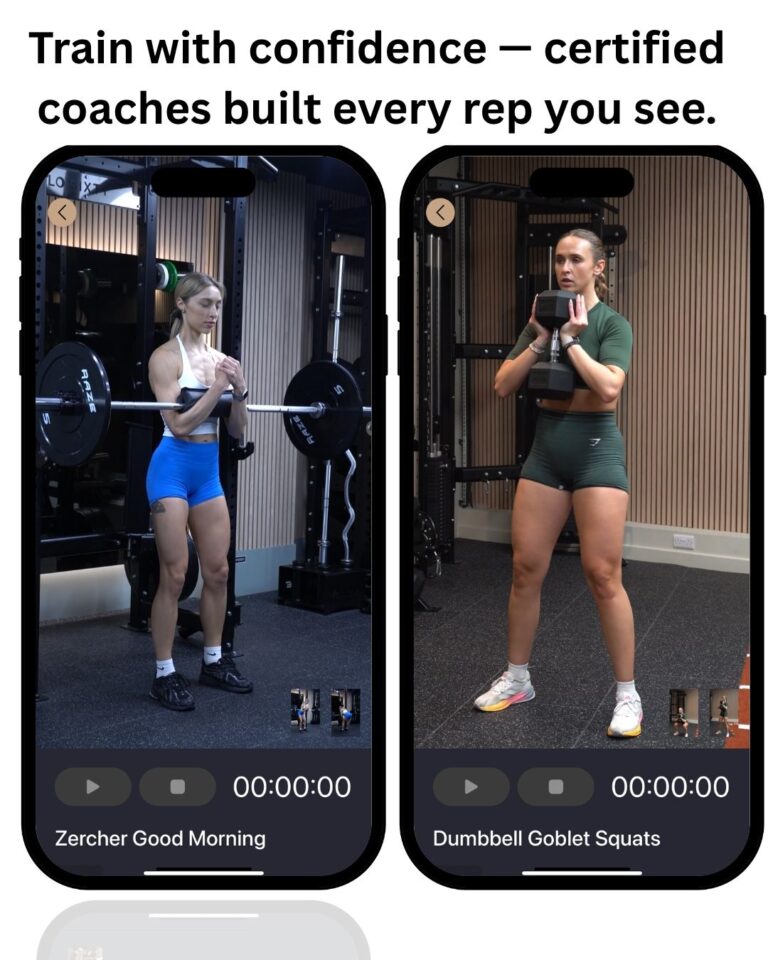
Lack of Systematic Approach
This might be the most important problem of all. Without a systematic approach to your training, you’re essentially guessing your way to results. Sometimes you might guess right, but more often you’ll guess wrong and waste time and effort.
The Importance of Systematic Training
A systematic approach means having a clear plan for what you’re going to do, why you’re going to do it, and how you’re going to progress over time. It means making decisions based on principles and evidence rather than random impulses or whatever feels good in the moment.
Systematic training allows you to track what works and what doesn’t, make intelligent adjustments when needed, and build on previous progress rather than starting over constantly. It’s the difference between wandering aimlessly and following a map to your destination.
Without a system, you’re at the mercy of whatever workout you found online this week, whatever your gym buddy is doing, or whatever you feel like doing on any given day. This randomness prevents consistent progress and leads to frustration.
Problems with Random Workout Selection
Random workouts might be fun and varied, but they don’t provide the consistent stimulus your body needs to adapt. Your muscles don’t know that you’re trying to “confuse” them; they just know that they’re getting inconsistent and unpredictable demands.
Random workouts also make it impossible to track progress effectively. If you’re doing different exercises, rep ranges, and volumes every week, you can’t tell what’s working and what isn’t. You have no baseline for comparison.
This approach also tends to neglect important but less exciting aspects of training, like progressive overload, recovery management, and balanced programming. People focus on the fun, novel exercises while ignoring the fundamentals that drive results.
How Lack of Structure Kills Results
Without structure, you end up repeating the same mistakes over and over without realising it. You might consistently under-train certain muscle groups, over-train others, or use ineffective exercises simply because you don’t have a systematic way to evaluate and improve your program.
Lack of structure also makes it easy to skip the hard work. When you don’t have a plan, it’s tempting to avoid challenging exercises or cut workouts short when you don’t feel like pushing yourself. A good system holds you accountable to doing what needs to be done.
Finally, a lack of structure makes it very difficult to troubleshoot problems when progress stalls. If you don’t know exactly what you’ve been doing, how can you figure out what needs to change?
Why 12-Rep Training Provides a Systematic Framework
Twelve-rep training gives you a clear, consistent framework for all your workouts. You always know what rep range to use, which takes away one major variable and allows you to focus on other aspects of progression.
The systematic nature of 12-rep training makes it easy to track progress and make adjustments when needed. You can clearly see when you’re progressing (more weight for 12 reps) and when you need to make changes.
The approach is also simple enough to follow consistently but flexible enough to accommodate different exercises, training splits, and individual preferences. You get the benefits of structure without feeling locked into a rigid system.
Benefits of Structured Programming
Structured programming ensures that all important aspects of training are addressed: progressive overload, adequate volume, proper frequency, balanced muscle development, and appropriate recovery. Nothing gets overlooked or forgotten.
Structure also makes training more efficient. You don’t waste time wondering what to do next or trying to remember what you did last week. You follow your plan, track your progress, and make systematic improvements over time.
Perhaps most importantly, structure builds confidence and reduces anxiety about your training. You know that what you’re doing is based on sound principles and proven methods, not random guesswork.
A good system also makes it easier to stay motivated during difficult periods. When you don’t feel like working out, you can rely on your system to guide you through an effective session even when your motivation is low.
Stop the guesswork and random workouts. The 12rep app provides the systematic approach you need for guaranteed results, taking care of all the programming details so you can focus on the work.
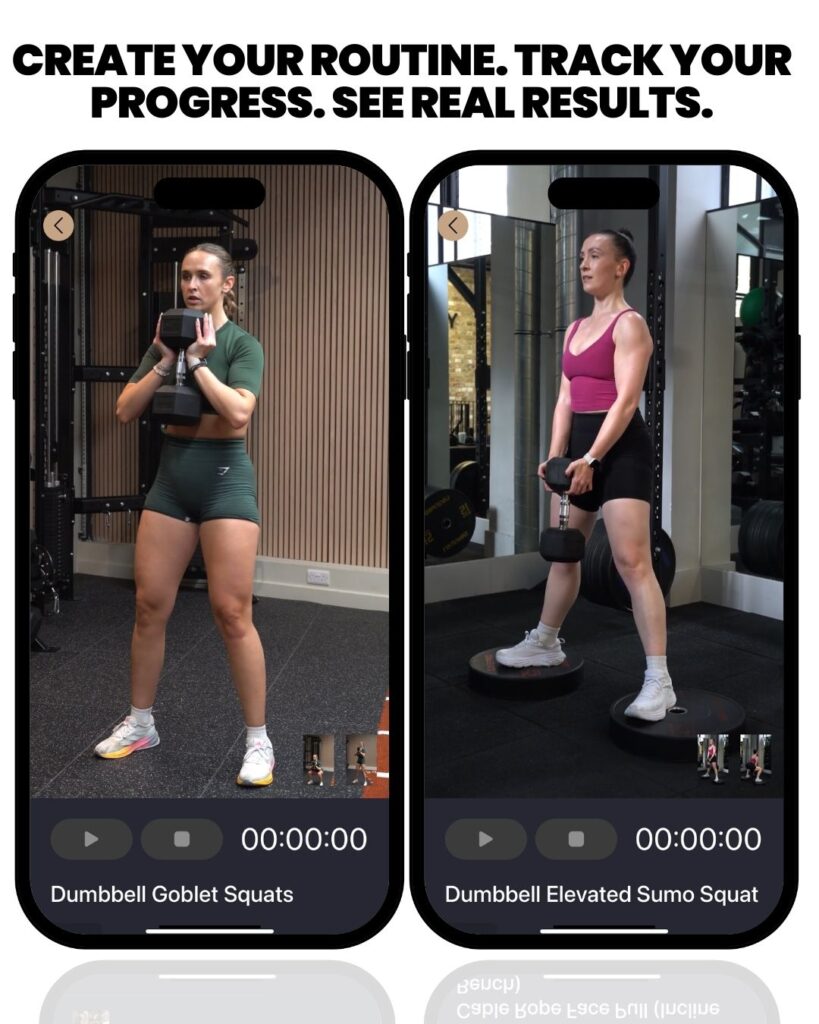
Conclusion and Solution
Now you understand the seven major problems that have been sabotaging your workout results: inconsistent progressive overload, poor exercise selection, inadequate training volume, inconsistent training frequency, lack of proper recovery, poor form and technique, and lack of a systematic approach.
These aren’t minor issues that slow progress slightly. These are fundamental flaws that can completely stop your progress for months or even years. If any of these problems sound familiar, you now know why your current workout isn’t working.
But here’s the good news: you don’t have to fix these problems one by one. There’s a single approach that solves all seven problems simultaneously: 12-rep training.
How 12-Rep Training Solves Every Problem
Twelve-rep training provides multiple pathways for progressive overload, making it easy to progress consistently without hitting walls. The moderate weights work perfectly with the most effective exercises while eliminating problematic ones that don’t work well for higher volumes.
The rep range naturally puts you in the optimal volume range for muscle growth while being sustainable enough to maintain consistent frequency. The moderate intensity supports better recovery while promoting good form and technique throughout each set.
Most importantly, 12-rep training provides a systematic framework that takes the guesswork out of your workouts. You always know what to do, how to progress, and when to make adjustments.
This Is Your Opportunity for Change
You don’t have to accept mediocre results anymore. You don’t have to wonder if your genetics are holding you back or if you’re just not meant to be fit and strong. The problem has been your approach, not your potential.
Thousands of people have already discovered the power of systematic 12-rep training. They’ve gone from frustrated and plateaued to consistently progressing and achieving results they never thought possible. You can be next.
The solution isn’t complicated, but it does require commitment to following a proven system rather than jumping from one random workout to another. It requires trusting the process even when it feels different from what you’ve done before.
Your Next Steps
First, acknowledge that what you’ve been doing isn’t working. This isn’t a failure on your part; it’s simply recognition that you need a better approach. Most workout programs are fundamentally flawed, so your lack of results isn’t surprising.
Second, commit to giving a systematic approach a real chance. This means following the program consistently for at least 8-12 weeks, not trying it for two weeks and then switching to something else when you don’t see immediate results.
Third, focus on the process rather than obsessing over daily results. Trust that if you follow the system consistently, the results will come. Some days will feel better than others, but the long-term trend is what matters.
The Time Is Now
Every day you continue with an ineffective approach is another day of wasted effort and missed progress. You’re already putting in the time and energy to work out, you’re just not getting the results you deserve.
You have two choices: continue doing what you’ve been doing and hope for different results, or adopt a proven system that addresses all the problems that have been holding you back.
The choice is yours, but the solution is clear. Twelve-rep training isn’t just another workout fad; it’s a systematic approach based on exercise science and proven through thousands of successful transformations.
Ready to fix these problems and finally see the results you deserve? Download the 12reps app and transform your training today. Join thousands who have solved their training problems with our proven 12-rep system.
Your body is capable of incredible changes. Your genetics aren’t holding you back. You just need the right system to unlock your potential. That system is 12-rep training, and it’s available to you right now.
Stop accepting mediocre results. Stop wondering why your workouts aren’t working. Start getting the results you’ve always wanted with a systematic approach that actually works.

Scientific References
[1] Plotkin, D., Coleman, M., Van Every, D., et al. (2022). Progressive overload without progressing load? The effects of load or repetition progression on muscular adaptations. *PeerJ*, 10, e14142. https://peerj.com/articles/14142/
[2] Kataoka, R., Hammert, W. B., Yamada, Y., et al. (2024). The plateau in muscle growth with resistance training: an exploration of possible mechanisms. *Sports Medicine*, 54(1), 31-48. https://link.springer.com/article/10.1007/s40279-023-01932-y
[3] Gelman, R., Berg, M., & Ilan, Y. (2022). A subject-tailored variability-based platform for overcoming the plateau effect in sports training: A narrative review. *International Journal of Environmental Research and Public Health*, 19(3), 1722. https://www.mdpi.com/1660-4601/19/3/1722

